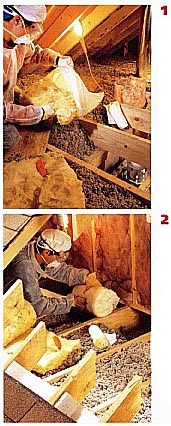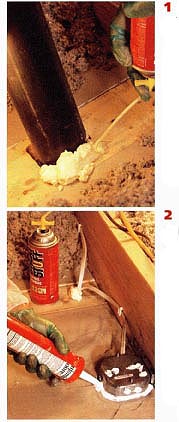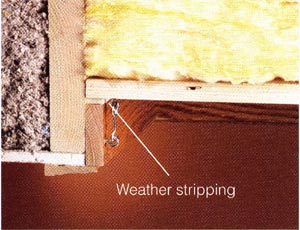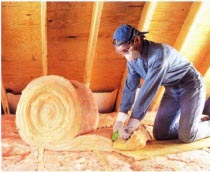It’s dusty, dirty work, but sealing and insulating your attic is an extremely effective way to cut your energy bills. The average attic has gaps around pipes, chimneys, walls and light fixtures that waste your energy dollar.
For little money and a day’s labor, you can seal these gaps. To find leaks, set a fan in an open window, aiming it to blow inward and sealing it tightly with tape and cardboard. Close all other doors, windows and ducts leading to the outside. Turn the fart on high to pressurize your house. Go into the attic to feel for drafts and look for insulation being blown around.
Safety Alert! Vermiculite Insulation: Some attics have vermiculite insulation -- a lightweight, pea-size, flaky gray mineral -- which may contain asbestos. Don’t disturb it unless you’ve had it tested by an approved lab.
Plugging Large Holes
Put on protective gear and clothing, then seal any large open joist cavities and the areas above stairwells, soffits and dropped ceilings.

1. Cut a square piece of unfaced fiberglass batt, fold it into a plastic garbage bag, punch a few holes on the cold side, and stuff it into the top of each open soff it cavity.
2. Cut a larger rectangle of fiberglass batt, place it into a garbage bag, fold and stuff it into the joist space under kneewalls.Sealing Flues and Chimneys
Insulate around furnace or water-heater flues to stop air leaks. The pipe gets hot, so install a heat shield to protect the insulation.
1. Cut aluminum flashing to fit around the flue, press it into a bead of latex caulk and staple it down. Overlap all the seams generously.
2. Create a collar to prevent insulation from con tacting the flue: Cut slots and bend tabs in. Wrap the collar around the flue and staple it down.
Sealing Small Gaps
Seal openings around plumbing vent pipes and electrical wires with expanding foam. It works well, but it’s messy stuff, so wear latex gloves..
1. Stuff strips of fiberglass batts into gaps as
backing. Then follow the directions on a can of expanding foam to fill
the gap completely.
2. Fill wiring and plumbing holes with expanding foam. Caulk around electrical boxes, fill the holes with caulk and replace insulation.
Weather Stripping Hatches
Seal the attic hatch door by installing foam weather stripping and using hook- and -eye fasteners to hold the door air tight.
Installing Insulation
Fill joist, rafter and stud spaces with fiberglass batts. In cold climates, install overlapping layers.